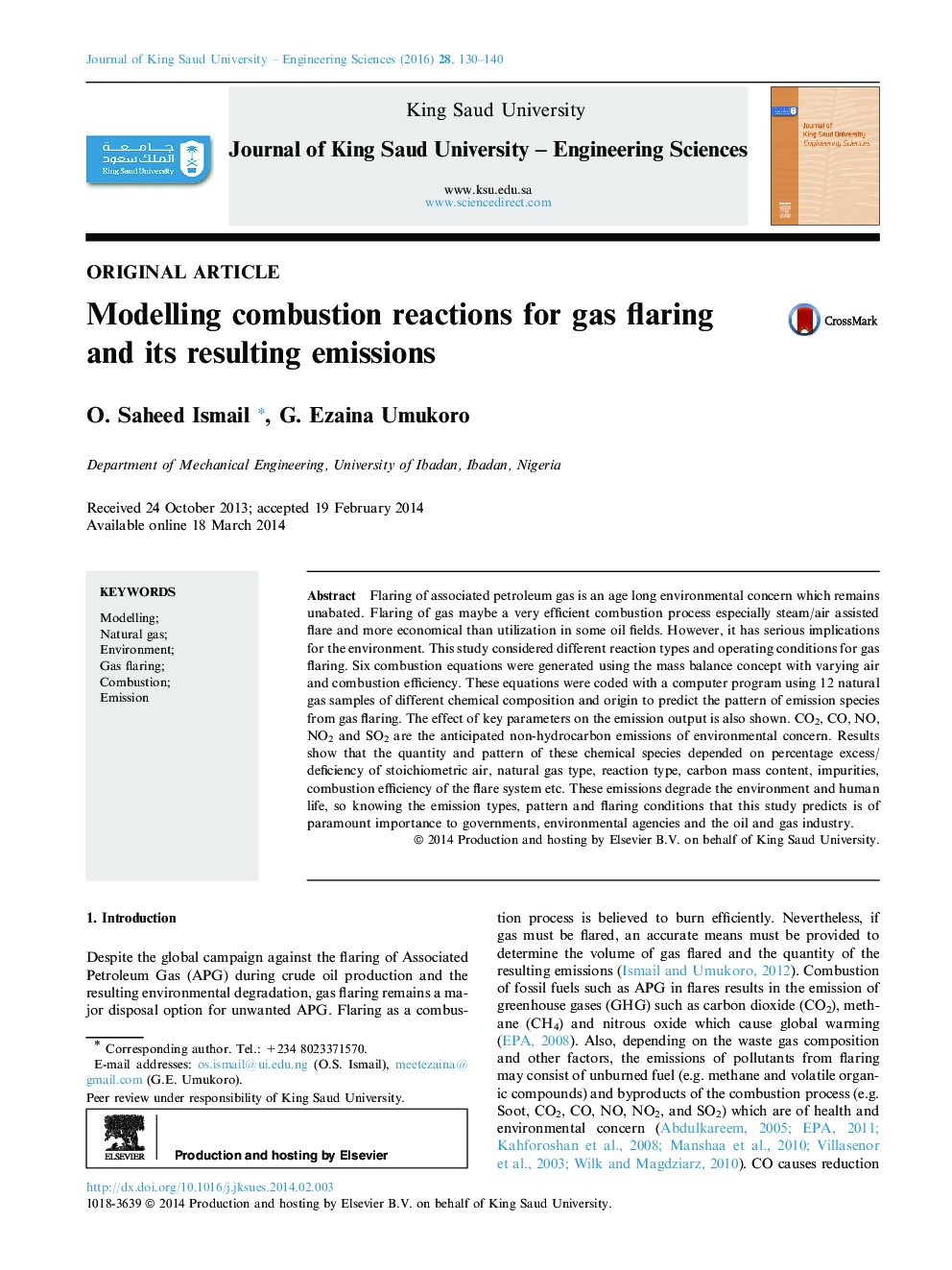| Article ID | Journal | Published Year | Pages | File Type |
|---|---|---|---|---|
| 827130 | Journal of King Saud University - Engineering Sciences | 2016 | 11 Pages |
Flaring of associated petroleum gas is an age long environmental concern which remains unabated. Flaring of gas maybe a very efficient combustion process especially steam/air assisted flare and more economical than utilization in some oil fields. However, it has serious implications for the environment. This study considered different reaction types and operating conditions for gas flaring. Six combustion equations were generated using the mass balance concept with varying air and combustion efficiency. These equations were coded with a computer program using 12 natural gas samples of different chemical composition and origin to predict the pattern of emission species from gas flaring. The effect of key parameters on the emission output is also shown. CO2, CO, NO, NO2 and SO2 are the anticipated non-hydrocarbon emissions of environmental concern. Results show that the quantity and pattern of these chemical species depended on percentage excess/deficiency of stoichiometric air, natural gas type, reaction type, carbon mass content, impurities, combustion efficiency of the flare system etc. These emissions degrade the environment and human life, so knowing the emission types, pattern and flaring conditions that this study predicts is of paramount importance to governments, environmental agencies and the oil and gas industry.
